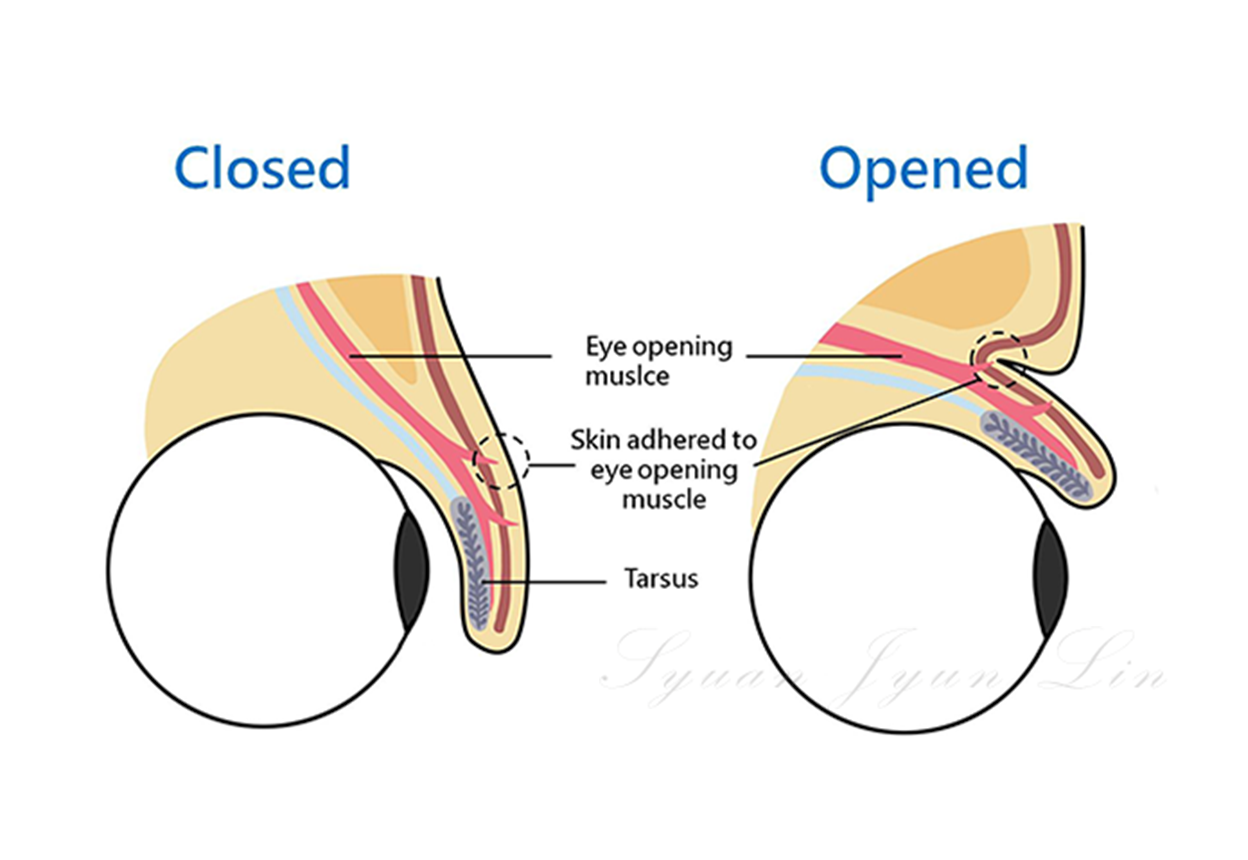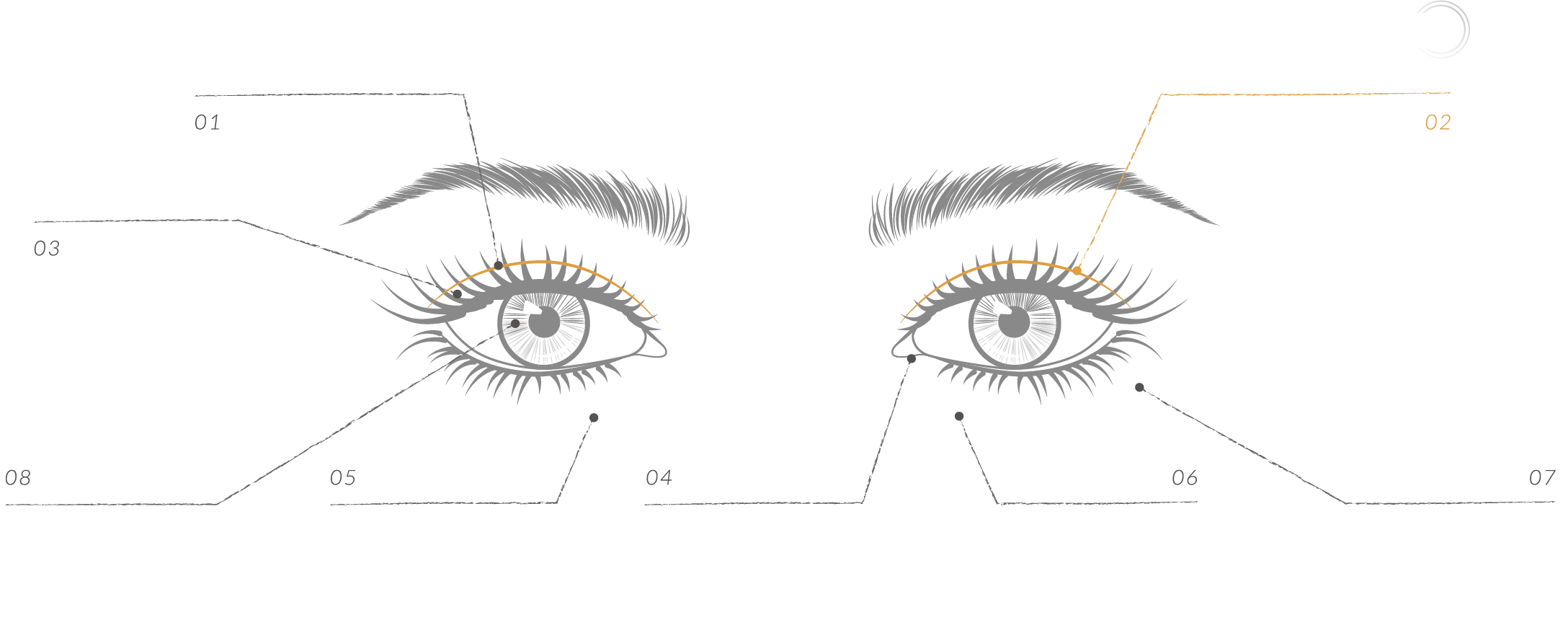Double Eyelid Revision
(Re-do) Surgery
The practice of double eyelids has two types: non-incisional and incisional types.
The practice of non-incisional type is more easily loosened
than incisional type
but the revision surgery after non-incisional
type is easier to be performed.
On the other hand, the practice of incisional type is firmer,
but if more tissues, including the levator muscle,
fat and orbicular oculi muscle, were removed during the first operation,
causing more adhesions,
it would increase the difficulty of
the revision surgery.
Timing to revise double eyelids
The first timing of double eyelids revision is two weeks after operation for the original doctor to revise it because the tissue has not recovered and healed, fine adjustments are very easy. An experienced doctor does not need to wait for complete detumescence. In the mild-swelling condition, an experienced doctor can estimate the final result after detumescence.
The second timing is three months later because there is still a slight difference between both eyes before complete detumescence. If the first timing has been missed, there is no advantage of early revision since the tissues are healed, then it is better to wait for complete detumescence and perform the surgery to make it more symmetrical.
Due to the previous failed surgery, the patient is heart-broken and afraid of another failed surgery. The patients seeking the doctor’s help usually did a lot of homework about the eyelid, and consulted more than one doctor. Before and after the double eyelid surgery, it is often very torturous for the patient. Physicians need to be more patient and empathetic to explain the surgical procedures more clearly. The first surgery is the easiest to perform perfectly. Sometimes the second surgery cannot be perfect because the conditions of the eyelids are limited. Selecting a good doctor for the first surgery is very important, which can save time and effort for revision.

The surgery
Revise double eyelids-from wide to narrow
The eye-opening muscle is like a hand, pulling the edge of the eyelids to open your eyes. If there is a part where the eye-opening muscles and skin attach, opening eyes will wrinkle the skin inward, resulting in double eyelid folds. Through double eyelid surgery, the adhesion of the skin to the eye-opening muscles can be artificially created to form double eyelid folds.
If you want to narrow the double eyelid fold, is it possible to make another adhesion just below the original line? The answer is no. When there are two respective adhesions up and down, the eye-opening muscle still tends to pull the upper one as it opens the eyes. Therefore, if you want to create a lower double eyelid fold, you must first break the upper adhesion, and use the incisional method to cut the old adhesion.
Revise double eyelids-from narrow to wide
If you want to widen the double eyelids and form a new double eyelid fold in a higher position, there is chance to make a new stitch directly above the original line by non-incisional method. But there are three things to consider:
1. If the new double eyelid fold is about 2 times higher than the original one, simply using non-incisional method without removing the old stitches will result in triple eyelid folds.
2. If the previous double eyelid surgery results in a wide or thick fibrous adhesion, it will affect the smoothness of the new lines.
3. If the previous double eyelid surgery results in trichiasis, too much skin remaining just below the double eyelid line, or unexposed eyeliner after painting, it means there’s too much skin below the double eyelid line, and the incisional method is required to improve these problems.









